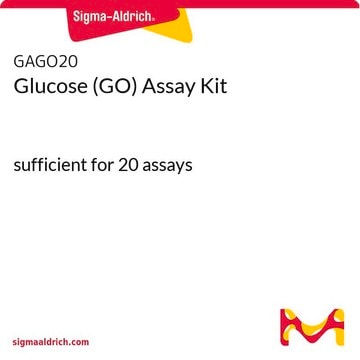Acidification of urine samples is necessary for longer-term storage. Oxalate demonstrates greater solubility under acidic conditions. Additionally, ascorbic acid (Vitamin C) in urine samples rapidly degrades into oxalate in non-acidified samples, so acidifying urine should help to prevent this. Given that the Working Reagent used in this assay is acidic, acidifying fresh samples prior to the assay should not be necessary.
MAK315
Oxalate Assay Kit
sufficient for 100 colorimetric tests
Synonym(s):
Oxalic Acid Detection Kit
About This Item
Recommended Products
detection method
colorimetric
relevant disease(s)
genitourinary disorders
storage temp.
−20°C
General description
Features and Benefits
Suitability
Principle
Storage Class Code
10 - Combustible liquids
Flash Point(F)
Not applicable
Flash Point(C)
Not applicable
Choose from one of the most recent versions:
Certificates of Analysis (COA)
Don't see the Right Version?
If you require a particular version, you can look up a specific certificate by the Lot or Batch number.
Already Own This Product?
Find documentation for the products that you have recently purchased in the Document Library.
-
What is the purpose of acidifying the samples for longer-term storage?
1 answer-
Helpful?
-
-
What is the approximate expiration time for these kits?
1 answer-
Expiration dating is batch specific and should be determined from the lot specific Certificate of Analysis. Please review your batch specific Certificate of Analysis by searching your lot number in the DOCUMENTATION section of the Product Detail Page:
https://www.sigmaaldrich.com/product/sigma/MAK315#product-documentationHelpful?
-
Active Filters
Our team of scientists has experience in all areas of research including Life Science, Material Science, Chemical Synthesis, Chromatography, Analytical and many others.
Contact Technical Service
